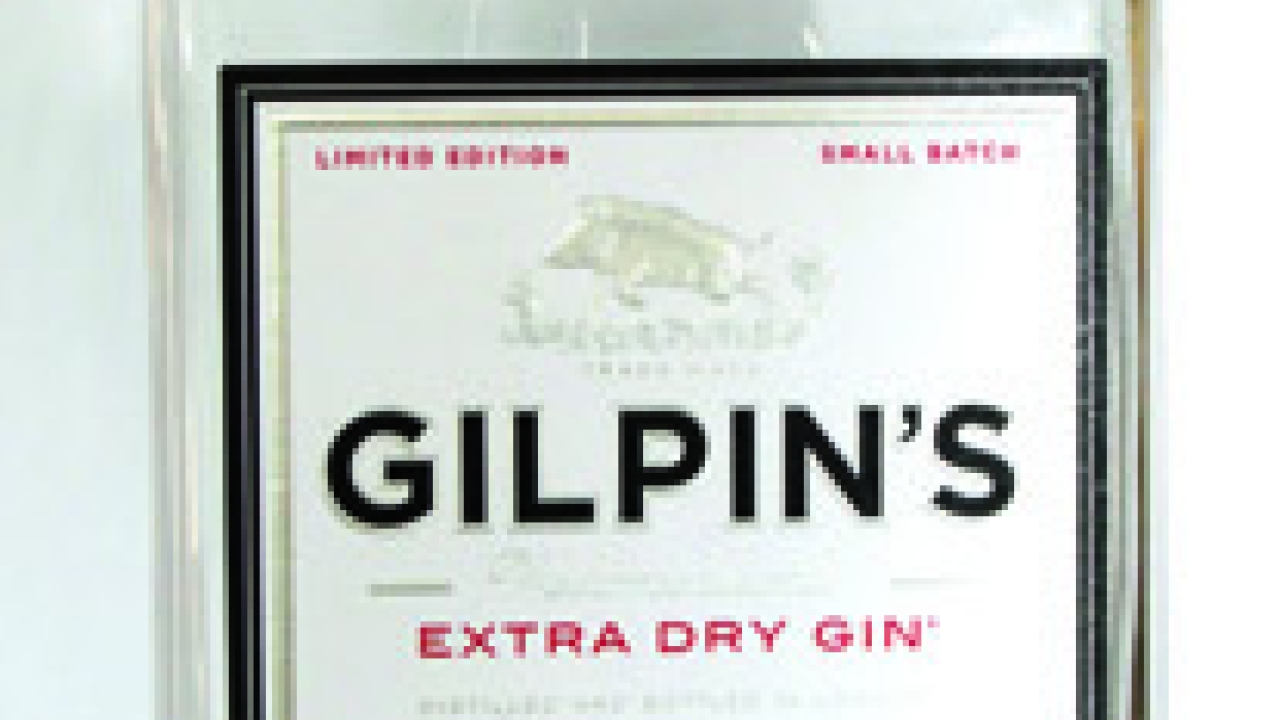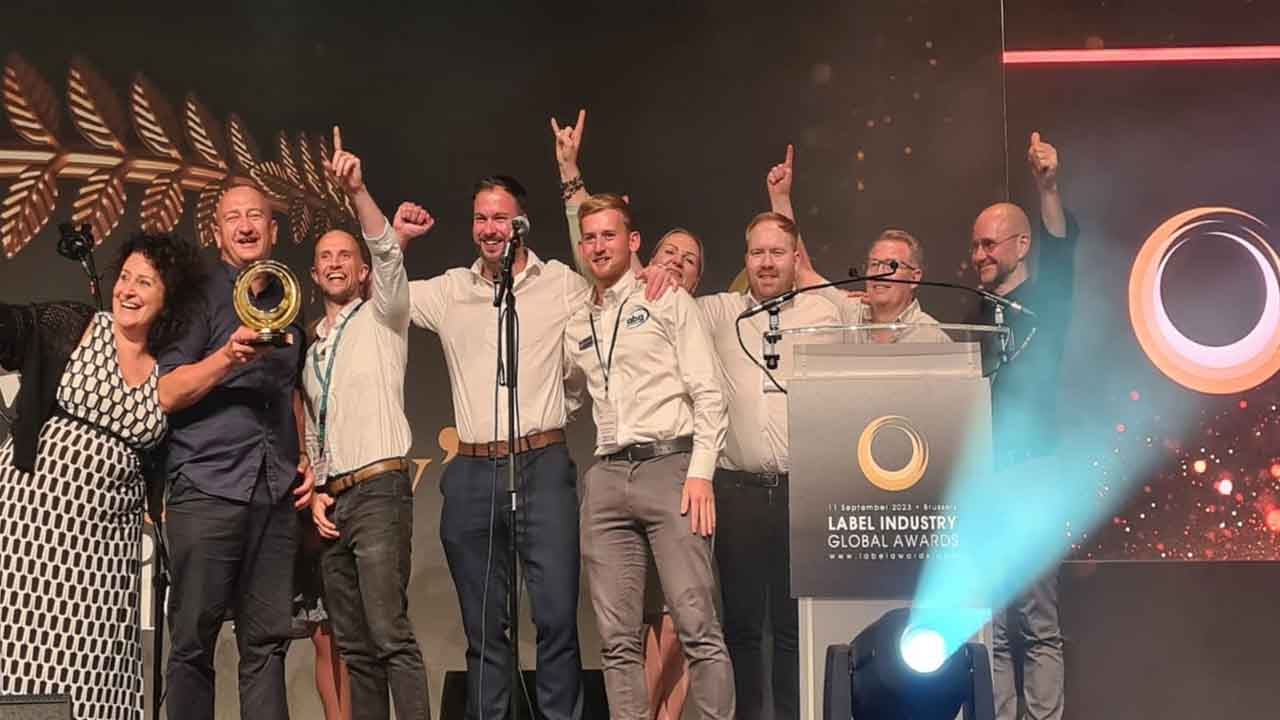Creative challenge

The transition from ‘safe’ family business to cutting-edge label converter can be a difficult process, as Carol Houghton reports
Making the transition between generations in family owned businesses can be a frustrating experience. Stuart Kellock, managing director at Label Apeel, speaks honestly of arguments, opposing visions and the resulting awkward family Christmases. Limited by visions of a different generation and desperate to build and develop the values of the company, he bought his father’s business, Label Apeel, in 2006 and has now established a ‘forward thinking, self-adhesive label manufacturing and printing business’.
Kellock has worked hard to discard the tag of ‘family owned’ business, believing it is tarred by association with small, ‘safe’ companies. His ambitions go a long way beyond that.
Key to Kellock’s vision is to become a partner in developing his customers’ brands. ‘Brands are having to employ better designed labels that can add value to their products in the fight for shelf appeal,’ he says. ‘This is why it is important that brand managers work with printers who are open to and embrace the creative process. Printers need to stop just putting ink on paper.’
All too often the printer is seen as a point of conflict in the creative process, forcing creativity to be forfeited in the name of productivity and efficiency. Kellock hopes to change this. Label Apeel as an organization works closely with designers, marketing agencies, brand managers and print management companies to develop ideas at an early stage.
‘Press operators know better than anyone what the machine is capable of, and they can pass this knowledge on to make designers aware of what is possible.’
Kellock concedes that Label Apeel ‘are new kids on the block’ but the company is beginning to be recognized as a high quality supplier. It is ‘humbly proud’ to have been shortlisted for the UK packaging Awards 2012’s Label of the Year Award, along with major players CCL and Paragon.
Taking the leap
In 2007, Label Apeel took ‘a leap into the drinks sector’ when it bought out a local competitor. Kellock had been in discussions with Dave Cox, managing director at Label Studio, for the two companies to work together and combine their strengths. But a change in circumstances saw Label Apeel buy out the company, adding Label Studio’s equipment and Cox to the team.
Label Apeel was able to capitalize on Label Studio’s experience in wine and beer labels to build a strong reputation in the beverage industry. Earlier in the year it worked with Westmoreland Spirits on its luxury Gilpin’s Gin brand. The digitally printed label is sequentially numbered and cut with a fluted die. A combination of embossing and silver foil was used to create a striking label depicting a charging bore. The label is used on bottles in high-end venues in London – The Dorchester Hotel in Mayfair; the Mandarin Bar in Knightsbridge and Dukes Bar in St James Place.
Part of the campaign for the super premium gin, required Label Apeel to create codes for each bottle produced. ‘The work we’ve done with Gilpin’s Gin shows how to make variable data work for a brand. Each bottle was given a unique number, and with so few of this high quality product produced this feature adds a lot of kudos to the brand. The drink is deemed as exclusive as the establishments it is served in,’ explained Kellock.
Another sector of interest is personal and healthcare. As Kellock notes, this is a tough area to break into, and the competitors are the very best in the UK. ‘We have the kit and now – since the appointment of Amy Chambers as sales manager in 2010 – we also have the skill base to do it. But we want to develop a relationship with the right brand and customer, those who want to let their packaging do the work.’ In the next 12 months Label Apeel will be working with Bronnleys, digitally printing labels for its personal care products.
Eighteen months ago, Label Apeel made another bold leap, this time into the digital arena with an HP Indigo WS6000 press. The decision was based on the machine’s wide color gamut and ‘universal’ material availability. Label Apeel targets only complex, added value work – for example in the specialty beer market where there is a need for high quality short runs. ‘Label Apeel recognized the need to look fabulous! There are now 800 microbreweries – many with a 13 percent turnover growth rate a year – all fighting for shelf space.’
A Digicon ABG finishing line with hot foil, embossing, screen and flexo heads complements the HP press. ‘It is working well for us, we’ve been busy from day one and have seen a significant growth in sales in the digital area,’ Kellock says. ‘We never lose a label on the Digicon and there is no running up or down, so waste is minimal.’
As with many converters, Label Apeel employees were initially fearful of going digital: ‘What would you need operators for?’ is a common question. ‘Some consider moving into digital as de-skilling, but it would be an error to use an unskilled printer on the press,’ says Kellock. ‘They need to evaluate the press consistency for better quality.’
The seven-color HP WS6000 has led Label Apeel into new markets and allowed it to develop higher quality labels for customers who could not previously have afforded them. ‘Smaller brands are now punching above their weight due to minimal tooling costs’.
The trend towards smart labels has not escaped Kellock. He believes QR codes and Augmented Reality are the way forward: ‘There is a real opportunity for the print industry to embrace this and wrestle back power from the internet. Labels don’t just look pretty; they have real value for printers to bridge that gap.’ Label Apeel is working with web designers to develop strong online content to draw people further into the brand. ‘A QR code needs to be doing something to add real value.’
Creativity
Kellock places an emphasis on helping a brand to get leverage and differentiate, ‘We like to encourage brands to go in the opposite direction to everyone else’. In 2005 to 2006, Label Apeel was printing lots of the same thing, now it works with designers to challenge itself, learn and improve. ‘We are committed to learning’ he says. On this note, Label Apeel currently has two apprentices, and four of the 40 members of staff are ex-apprentices.
The company has been producing peel and read labels for six months and is also pushing the boundary in tactile designs. ‘A good looking label/package gets the product picked up off the shelf but how it feels seals the deal at the point of purchase,’ says Kellock. ‘We are not doing anything complex, just playing with ideas and people’s reactions. We enjoying playing with print.’
Top cheese
Label Apeel won a HP Print Excellence award in the food labels category for its Clawson Cotswold export range. It has been working with the Long Clawson Dairy for nine months, producing labels for its new brand of premium cheese and export range.
The winning label has an embossed slate effect with an opportunity to ‘discover more’ via a peel and reveal feature on the front label and dark paper wrap.
‘It’s fantastic to win the HP Print Excellence Award since we’ve only been producing digital print for 18 months’, said Stuart Kellock. ‘We didn’t have a great deal of time to work on the labels, but in just two days we’d printed, foiled and embossed the finished product. Which are both aesthetic and functional. Long Clawson appreciated our ability to be able to produce very high quality work on both long runs using our flexographic machinery and being able to match the same quality on shorter runs using our digital press.’
He concluded: ‘The great taste of the cheese and the strong shelf appeal of the label; we’ve definitely hit on a tasty winning formula.’
Pictured: A combination of embossing and silver foil creates a striking label for Gilpin’s Gin
This article was published in Labels & Labeling issue 6, 2012
Stay up to date
Subscribe to the free Label News newsletter and receive the latest content every week. We'll never share your email address.

